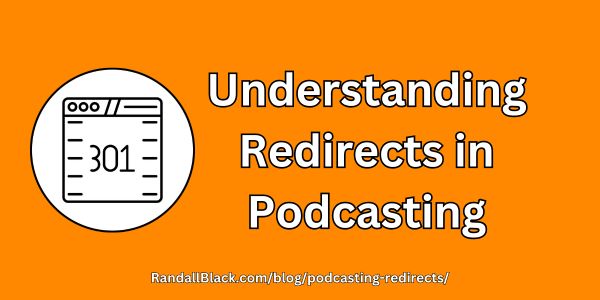Redirects play a critical role in the podcasting ecosystem. Whether you’re moving your show to a new host, tracking downloads, or maintaining feed integrity, knowing how redirects work—and when to use them—can save you headaches and help you retain your audience. In this post, we’ll explore the different types of redirects used in podcasting and why they matter.
What Is a Redirect?
A redirect is a way to automatically forward one URL to another. In podcasting, redirects are often used to forward an old feed URL or media file link to a new one without interrupting access for subscribers or podcast directories.
Common Types of Redirects in Podcasting
1. 301 Redirect (Permanent)
- Purpose: Used when your podcast feed or media file has permanently moved to a new URL.
- Why It Matters: Tells podcast directories (Apple Podcasts, Spotify, etc.) to update to the new location.
- Use Case: Moving from one podcast host to another (e.g., from Libsyn to Buzzsprout).
Example:
Redirecting fromhttp://oldhost.com/feedtohttp://newhost.com/feedvia a 301 ensures all apps update to the new feed URL automatically.
2. 302 / 307 Redirect (Temporary)
- Purpose: Indicates a temporary move.
- Why It Matters: Podcast directories usually do not update the stored feed URL when they see a 302/307.
- Use Case: Testing a new host or routing temporarily without making permanent changes.
3. Prefix URL Redirects
- Purpose: Used for tracking downloads and listener data.
- Why It Matters: Services like OP3 or Podtrac insert a prefix in front of your media file URL to count downloads.
- Use Case: Gaining insights into listener behavior.
Example:
A media file URL might change from:https://myhost.com/episode1.mp3
tohttps://pdst.fm/e/https://myhost.com/episode1.mp3
4. Feed Proxy Redirects
- Purpose: Third-party services serve your feed on your behalf.
- Why It Matters: Allows for centralized management, analytics, or ad insertion.
- Use Case: Using services like Feedburner or Podtrac to serve your RSS feed.
Note: If you stop using the proxy, be sure to set a 301 redirect from the proxy feed to your direct feed to avoid losing subscribers.
Why Redirects Matter
- Preserve Your Audience: Without a proper 301 redirect, listeners might lose access to your show.
- Maintain SEO and Directory Listings: Redirects ensure your content remains discoverable.
- Enable Better Analytics: Prefix and proxy redirects help you measure downloads and listener behavior.
- Smooth Transitions: Whether it’s a host migration or a short-term experiment, redirects help manage changes seamlessly.
Best Practices
- Always use a 301 for permanent feed changes.
- Monitor feed redirects during and after a host switch.
- Keep redirects in place for several weeks, if not permanently.
- Avoid chaining redirects (e.g., A → B → C) as it may confuse podcast apps.
Conclusion
Redirects are more than just technical tools—they’re safeguards for your podcast’s continuity and growth. Whether you’re measuring success or migrating platforms, knowing how to use redirects effectively ensures your audience—and your analytics—stay intact.
Need help implementing redirects or managing a host switch? Reach out or leave a comment below—I’d be glad to help!
